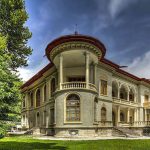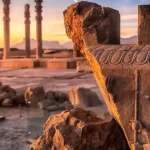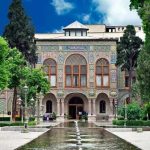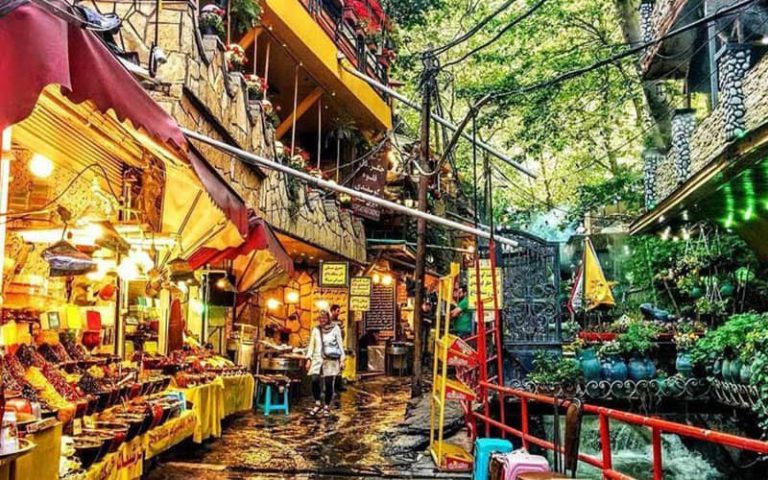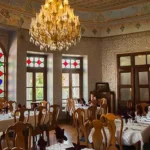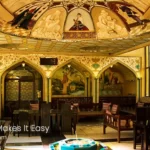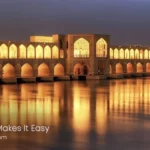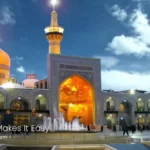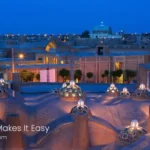Iran’s tourism scene is a hidden gem waiting to be explored. With a history dating back thousands of years, the country boasts a diverse range of museums offering glimpses into its past. From archaeological wonders to cultural artifacts, these museums showcase the vibrant tapestry of Iran’s heritage. Whether you’re interested in ancient Persian civilization or the Islamic Golden Age, there’s something here for everyone. The collections are vast, spanning from ancient relics to contemporary art, providing an enlightening journey through time. If you’re a history enthusiast or simply looking to expand your horizons, museums of Iran are an intriguing window into a captivating world. Next, we’ll introduce you to the top 10 Iran museums .
Top 10 Museums in Iran
National Museum of Iran

The National Museum, Iran’s first official museum and often referred to as the mother of all Iran museums here, is a massive place spanning over 20,000 square meters with an exhibition area of 18,000 square meters. This museum is the real deal – it’s the oldest, most important, largest, and one of the wealthiest museums in Iran. It’s divided into two sections: Ancient Iran and the Islamic era. The Ancient Iran section displays historical artifacts from the Stone Age to the Sassanid era. In the Islamic area, you’ll find treasures from the post-Islamic period. This museum houses an incredible collection of over 300,000 items representing various cultural eras in Iran, from prehistoric times to the Islamic age. It’s a historical treasure trove waiting to be explored!
Treasury of National Jewels
The National Jewelry Museum is a hidden treasure in the basement of the Central Bank of Iran, housing a dazzling collection of royal and historically valuable jewelry and objects from ancient to modern times. It’s not just about the economic value; it’s a testament to the taste and craftsmanship of Iranian artisans and artists throughout history. This museum is a must-visit if you’re into unique jewelry designs and all things gold. The jewelry and treasures in the National Jewelry Museum are divided into 36 distinct sections, showcasing items like ornamental jewelry, crowns and tiaras, brooches (also known as “Peykaleh”), vases, food covers, water pipes, mirrors, staffs, thrones, pins, and chest decorations. And don’t forget to check out the collection of precious gems like diamonds and pearls, including the world’s largest pink diamond, the “Pink Star,” on display in this museum. It’s an absolute gem of a place!
Golestan Palace
Golestan Palace is one of Tehran province’s historical and fascinating attractions. It’s considered a global treasure due to its remarkable architecture and rich history, even earning a spot on the UNESCO World Heritage List. This palace dates back to the Qajar era, specifically during the reign of Mohammad Khan Qajar, and was completed in 1837. The palace’s stunning architecture combines Persian, European, and Russian influences, featuring intricately decorated tiles, mirrored halls, and beautifully landscaped gardens. Visitors can explore various buildings within the complex, such as the Marble Throne Hall, Diamond Hall, and the Hall of Mirrors, each with its unique design and historical significance. This museum in Iran is a complete collection of historical buildings in Tehran, each constructed during different periods. It’s one of Iran’s most valuable artistic and historical treasures, drawing attention from tourists and travelers annually. Many people visit to admire this magnificent structure’s incredible Iranian art and architecture.
Carpet Museum of Iran

The Carpet Museum in Iran, located in Tehran, houses an extensive collection of Persian rugs and carpets from various regions. It offers insights into the history and craftsmanship of Persian carpet making, showcasing intricate patterns and designs. The Carpet Museum preserves and displays various handwoven rugs and carpets, considering their quality, age, and the characteristics of Iranian carpets, including color, design, patterns, texture, and diverse weaving regions. The museum’s collection includes some of Iran’s most valuable carpet examples from the 9th century to the contemporary era. It serves as a rich resource for researchers and art enthusiasts alike. The ground floor hall showcases about 135 masterpieces from important carpet-weaving centers like Kashan, Kerman, Isfahan, Tabriz, Khorasan, Kurdistan, and more. This museum is a valuable destination for those interested in textiles and the cultural significance of these carpets. It provides a comprehensive look at the evolution of carpet weaving in Iran over the centuries.
Tehran Museum of Contemporary Art
The Tehran Museum of Contemporary Art is like a treasure chest of modern art in the heart of Tehran, holding some of the most important and extensive collections of post-World War II art from outside Europe and North America, including significant works from Abstract Expressionism, Pop Art, Minimalism, Conceptual Art, and Photorealism movements. In its permanent collection, the museum houses over 4,000 valuable pieces by top visual artists from Iran and around the world, with nearly 400 of them having exceptional significance. The estimated value of the museum’s holdings is around $2.5 billion. Notable artists featured in the museum’s collection include the likes of Goya, Renoir, Picasso, Magritte, Ernst, Pollock, Warhol, Lichtenstein, and Giacometti. It’s also home to a significant collection of contemporary Iranian art, including works by renowned artists like Sohrab Sepehri.
Read More: Top 10 Museums in Tehran
Saadabad Historical Cultural Complex
Saadabad Palace, or Saadabad Museum Palace, is one of the biggest palace complexes up in North Tehran, perched on the slopes of Tochal Mountain in the Shemiran area. This place is massive, covering about 300 hectares. Of that, 180 hectares are about lush gardens, greenhouses, and a network of waterways.
The remaining 110 hectares are home to various palaces and mansions of Saadabad. When you look at these buildings, you’ll see a blend of European and authentic Iranian architectural styles. They brought in some top-notch local and international architects for the design.
Here’s the twist: After the Islamic Revolution in Iran, the roles of these different palaces within the Saadabad complex changed. Many of them were turned into museums. There are 18 main buildings in Saadabad, both big and small, and they serve various purposes now:
The Ashraf Pahlavi Palace in the eastern part of the complex is now the Royal Tableware Museum.
The Black Palace, since 1982, has been the Fine Arts Museum.
The Queen Mother Farah Museum, located at the heart of Saadabad, showcases the works of the prominent Iranian miniaturist Master Farshchian.
And there’s the Shahram Palace, which is now transformed into a Military Museum and sits right in the center of the Saadabad complex.
Read More: Top 10 Historical Architecture Sites to Visit in Iran
Isfahan Music Museum

The Isfahan Music Museum is Iran’s first and only private music museum. It was founded on December 2, 2015, by two music enthusiasts passionate about Iranian traditional music. In this museum, you’ll not only get to explore more than 300 types of musical instruments but also enjoy live music performances. They’ve got some expert folks who know their stuff about music, and they can explain all about the musical instruments. Plus, you can even shop for musical instruments and other related goodies right there in the museum.
Gilan Rural Heritage Museum

The Rural Heritage Museum of Gilan is one of the coolest things to see in Rasht. It covers an area of around 263 hectares. This museum is a fantastic place to learn about the architecture, culture, lifestyle, local cuisine, handicrafts, clothing, and more from various regions of Gilan province. They’ve set up 28 different residential areas in this museum and recreated other rural spaces like rice paddies, barns, and bird nests. Visiting the Rural Heritage Museum of Gilan is an unforgettable experience for any visitor.
Azerbaijan Archeology Museum

In the heart of Tabriz city, you’ll find one of Iran’s oldest and most important museums, the Azerbaijan Museum. Thousands of tourists visit this Museum in Iran every year. This museum is the second-largest archaeological museum in the country, right after the National Museum of Iran. The Azerbaijan Museum houses some truly valuable and mind-blowing treasures. It has around 12,000 ancient artifacts, with nearly 2,300 officially registered. Some are on display in different museum sections due to space constraints. It’s quite a historical gem!
Yazd Water Museum

The Yazd Water Museum is where you can check out thousands of years of water history in Iran. This awesome museum is in a historic building called the “Kolahdoozha House.” The history of this place goes way back to 1226 AH (Islamic lunar calendar). In this museum, you can get familiar with historical artifacts and devices used to get water back in the day. What sets this museum apart from other water museums in Iran and worldwide is that it has a 300-year-old underground aqueduct running through it. Back in the day, this aqueduct provided drinking water for the folks in the Yazd region, and it was a big deal for the people of Yazd city.
FAQs about Museums in Iran
- What is the largest museum in Iran?
The largest museum in Iran is the National Museum of Iran, also known as the Iran Bastan Museum. - What’s the most modern museum in Iran?
The most modern museum in Iran is the Museum of Contemporary Art in Tehran.


